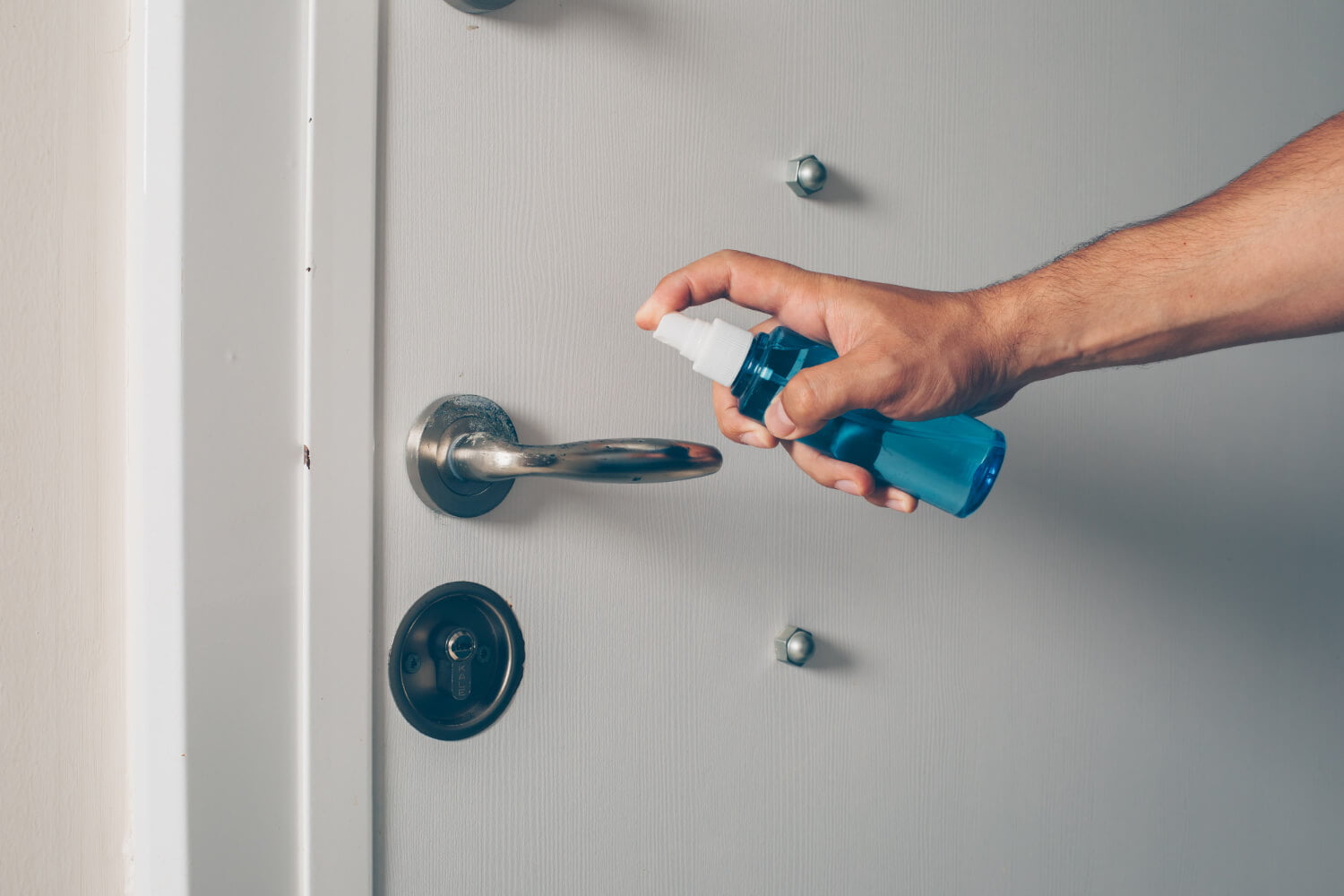Opening and closing doors countless times every day leads to a build-up of dirt, grease and grime on door hinges. While this grubby residue is unsightly, it can also prevent hinges from operating smoothly. Removing and soaking hinges in a cleaning solution is the most thorough way to clean them, but this time-consuming process requires unscrewing the hinge plates from the door and frame. Luckily, there are several effective methods for cleaning hinges without completely removing them.
Table of Contents
Use a Toothbrush and Baking Soda
A simple way to scrub away surface grime on hinges is by using an old toothbrush and baking soda. The abrasive texture of baking soda combined with the bristles of the toothbrush lets you scour the nooks and crannies of hinge joints. The steps are straightforward:
- Dampen an old toothbrush with warm water and dip it in baking soda to form a paste.
- Working one hinge at a time, scrub the toothbrush back and forth across the surface of the hinge and into crevices. Apply more baking soda paste as needed.
- Use a clean, dry cloth to wipe away any baking soda residue after scrubbing each hinge.
The baking soda is mildly abrasive to lift away grease and dirt without damaging the hinge surface. This method also conveniently avoids messy cleaners dripping down the door or frame.
Use a Cleaning Cloth and Ammonia
For heavy grime buildup, a cleaning cloth dabbed in household ammonia can dissolve grease and disinfect hinges. Diluting the ammonia slightly with water prevents it from being too harsh on metal surfaces. Here’s how to safely use this chemical cleaner:
- In a small bowl, mix 1 part ammonia with 2 parts warm water.
- Dip a lint-free cloth or rag into the ammonia solution, wringing out any excess liquid.
- With the door open, gently rub the ammonia-soaked cloth back and forth over the surface of the hinge.
- Scrub with extra pressure to lift sticky gunk lodged in crevices and along the hinge pin.
- Use a dry section of the cloth to buff each hinge clean. No rinsing is needed.
Wear gloves and work in a well-ventilated area when using ammonia. Avoid dripping the solution onto floors or walls by carefully wiping just the hinge area. This potent cleaner helps restore shine and smooth operation to gummed-up hinges.
Attack Grime with WD-40
The penetrative lubricating properties of WD-40 make it a winner for freeing stuck hinges and dissolving built-up dirt. Spraying directly into joints and pivots also helps flush out debris. Follow these steps for using WD-40 on hinges:
- Lay an old rag beneath the hinge to catch drips and overspray.
- Give the can a shake and apply WD-40 into and around hinge knuckles, pinheads and crevices. Spray liberally along the hinge pin.
- Let it sit for 2-3 minutes so the solvents can cut through grease and grime.
- Use a clean rag to wipe away residue and buff the hinge.
- Apply another light coat of WD-40 and wipe again with a clean cloth.
The penetrating action of WD-40 dissolves gunk and leaves a smooth lubricating film to prevent future buildup. Be sure to protect nearby walls and floors from overspray.
Make a Vinegar and Baking Soda Paste
For a fizzy DIY cleaning paste, just mix equal parts vinegar and baking soda. The acidic vinegar reacts with the alkaline baking soda to create a foaming action that lifts away grime. Here’s how to put this classic combo to work:
- Sprinkle baking soda lightly across the surface of the hinge.
- Use a cloth or brush to drizzle vinegar over the baking soda, activating the fizzing reaction. Let foam develop for 2-3 minutes.
- Once bubbling stops, wipe the hinge clean with a damp cloth. Rinse with a second wipe of just water.
- Buff the metal dry with a clean towel to prevent water spots.
The chemistry at work in this technique is safe for cleaning all types of door hinge finishes. For stuck-on grease, let the paste sit for 5-10 minutes before scrubbing and rinsing. No other chemicals are needed!
Remove Rust with White Vinegar
If door hinges have areas of light surface rust, full-strength white vinegar will help restore shine. The acetic acid in vinegar dissolves rust chemically without damaging metal. Follow this rust-fighting method:
- Dip an old toothbrush in undiluted white vinegar and brush liberally over any rust spots.
- Allow the vinegar to sit for at least 15 minutes as it works on the rust.
- Scrub again with the toothbrush, using a bit of elbow grease to remove all rust residue.
- Wipe the hinge clean and dry thoroughly with a towel.
- Apply a light lubricant like WD-40 to protect it from future moisture and rust.
Slow drips or splatters of vinegar won’t harm most flooring or wall finishes. But drape an old rag around hinges just in case to contain the liquid. With this vinegar approach, door hinges can look good as new again.
Conclusion
Cleaning gunked-up door hinges is an important maintenance task that doesn’t require fully removing them. Soda, vinegar, ammonia and WD-40 all help dissolve dirt buildup when applied carefully with brushes or cloths. Pick a method based on how dirty your hinges are and the type of finish. With regular cleaning, you can keep hinges operating smoothly for years before needing to replace them.
At Affordable Cleaning Services, our professional cleaners use effective green products and proven methods to clean hinges throughout your home. As a leading cleaning company serving Parramatta for over 20 years, we bring extensive experience and trusted service to make any cleaning job easier. Our bonded, insured cleaners arrive with state-of-the-art equipment to clean hinges and all other surfaces to a spotless shine. For an instant quote on full home or office cleaning services, call our friendly team today!
Frequently Asked Questions About Cleaning Door Hinges
✓What is the fastest way to clean door hinges?
Spraying hinges with WD-40 works quickly to lift grease and debris from the surface. Just spray it on, let it sit briefly, and then wipe it clean with a cloth. The solvent action of WD-40 cuts through gunk in minutes.
✓Can I use rubbing alcohol to clean the hinges?
Yes, isopropyl rubbing alcohol can be used to clean hinges and remove built-up dirt. Dampen a cloth and rub it over the hinge, allowing the alcohol to break down oils and grease before wiping clean. This disinfects as it cleans.
✓How do you clean old, painted hinges?
Use a mild abrasive like baking soda on a damp toothbrush to scrub painted hinges. Avoid ammonia or other harsh chemicals that could strip the paint. Borax mixed with water also works to safely cut through grime on painted hinges when scrubbed gently.
✓How often should you clean door hinges?
Door hinges should be cleaned every couple of months to keep them operating smoothly. High-traffic doors may need hinges cleaned as often as monthly. Regular cleaning prevents a major buildup that requires taking apart the hinge to fully clean it.






